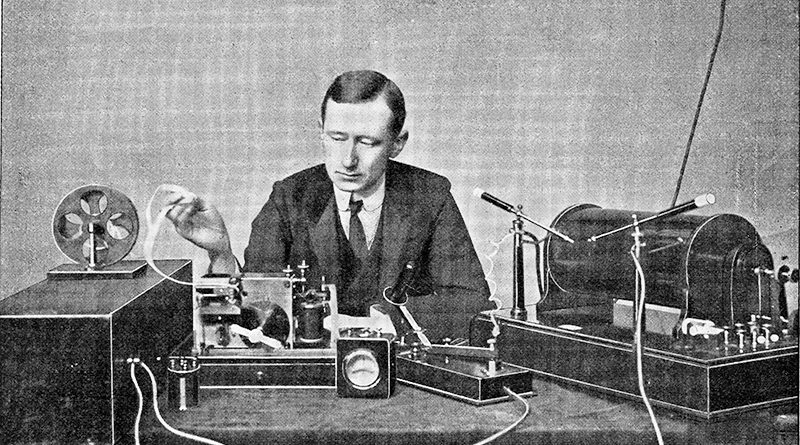First Radio Transmission to Cross the Atlantic Ocean
NEWFOUNDLAND, Canada —On Dec. 1901, Guglielmo Marconi, an Italian physicist, and radio pioneer, succeeded in sending the first radio transmission across the Atlantic Ocean.
The transmission was a simple ‘s’ in morse code that traveled more than 2,000 miles from Cornwall, England, to Newfoundland, Canada.
At the time, critics of the project told Marconi that the radio signal would be interrupted by the earth’s curvature and, therefore, the project would be unsuccessful. Nevertheless, Marconi continued with the project believing that the radio waves would follow the earth’s curvature.
The project was successful but not for the way Marconi thought. The transatlantic radio signal had reflected off of the ionosphere, a layer of the earth’s atmosphere containing high levels of ions and free electrons extending 50 to 600 miles above the earth’s surface that can reflect radio waves. It then bounced back down towards Canada, according to History.com.
Marconi was born in Bologna, Italy, in 1874; he studied physics before becoming interested in the work of German physicist Heinrich Hertz who was experimenting with radio waves.
In 1894 Marconi began his experiments and was able to send a transmission 1.5 miles; however, his work was not encouraged in Italy. So he moved to England in 1896, where he built his own wireless telegraph company, according to Oxford Open Learning.
Marconi succeeded in sending a transmission over the English Channel in 1899, shortly before the jump across the Atlantic.
The transmission across the Atlantic is considered one of Marconi’s greatest achievements; in 1909, Marconi was jointly awarded the Nobel Prize in physics with Ferdinand Braun, another innovator in radio, after successfully sending a radio transmission from England to Australia.
Marconi passed away in 1937 at 63 years old. On the day of his funeral, the BBC observed two minutes of radio silence as a tribute to his contributions to broadcast.


